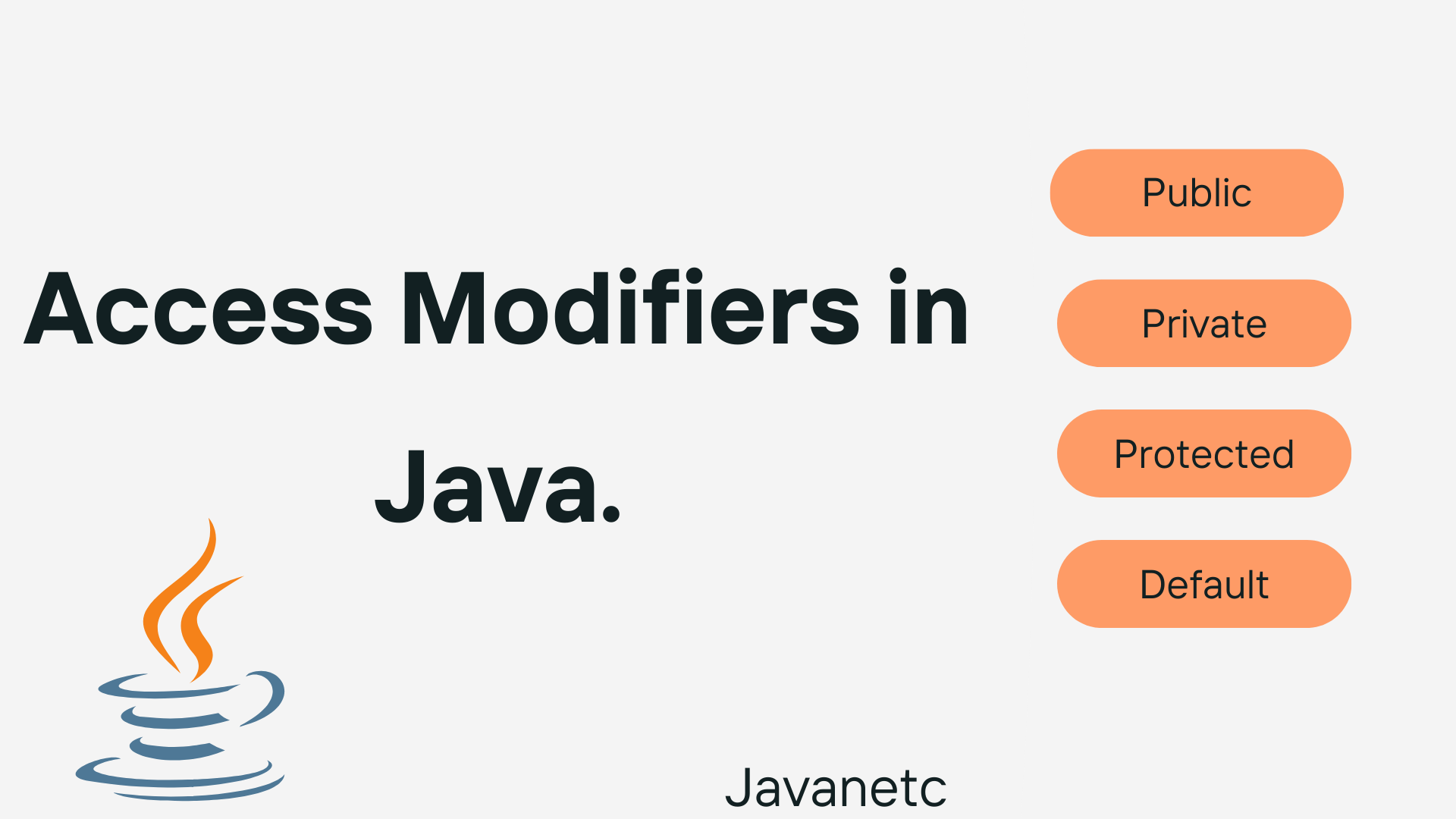Introduction
Access modifiers in Java play a pivotal role in controlling the visibility and accessibility of classes, methods, and variables within your code. Understanding these modifiers is essential for writing secure, maintainable, and efficient Java applications. In this comprehensive guide, we’ll explore access modifiers in Java, their types, usage, and best practices to help you become a Java programming maestro. Let’s dive into the world of access modifiers and unlock the true potential of your Java code.
Table of Access Modifiers in Java
What are Access Modifiers in Java?
Access modifiers in Java are keywords that determine the accessibility and visibility of classes, methods, and variables within your code. They help control the level of encapsulation, data security, and code organization in your Java applications. Java provides four main types of access modifiers: public, private, protected, and default (package-private). Let’s explore each of these in detail.
Types of Access Modifiers in Java
Public Access Modifier
The “public” access modifier is the most permissive of all. It allows the class, method, or variable to be accessible from anywhere within the application and even from other classes and packages. This modifier is often used for methods and variables that need to be accessed globally.
public class PublicExample {
public int publicVar = 42;
public void publicMethod() {
System.out.println("This method is public!");
}
}
Private Access Modifier
The ‘private’ access modifier, on the other hand, is the most restrictive. It restricts the access to the class or method to which it belongs. This is useful for hiding the implementation details and ensuring data privacy.
public class PrivateExample {
private int privateVar = 42;
private void privateMethod() {
System.out.println("This method is private!");
}
}
Protected Access Modifier
The ‘protected’ access modifier allows access within the same package and by subclasses, even if they are in different packages. This is useful when you want to grant access to related classes without exposing it to the entire application.
public class Parent {
protected int protectedVar = 42;
protected void protectedMethod() {
System.out.println("This method is protected!");
}
}
Default (Package-private) Access Modifier
The default or package-private access modifier is the absence of any modifier. It limits the access to classes within the same package, making it a good choice for package-level encapsulation.
class DefaultExample {
int defaultVar = 42;
void defaultMethod() {
System.out.println("This method is package-private!");
}
}
Best Practices of Access Modifiers in Java
When working with access modifiers, it’s essential to follow some best practices to maintain clean, secure, and efficient code:
1. Choose the most restrictive access modifier that still allows the desired access. Avoid using ‘public’ when ‘private’ or ‘protected’ would suffice.
2 .Ensure proper encapsulation by marking fields as ‘private’ and providing public methods (getters and setters) to access and modify them.
3 .Use ‘protected’ when you need to provide access to subclasses and package-level classes without exposing it globally.
4 .Keep classes and members as ‘private’ or package-private (default) when they are not intended to be accessed from outside their package.
| Access Modifier | Visibility | Where Accessible | Example |
|---|---|---|---|
public | Public | From anywhere within and outside the class, and across packages. | public int variable;<br>public void method(); |
private | Private | Only within the class where it is declared. | private int variable;<br>private void method(); |
protected | Protected | Within the class, its subclasses, and classes in the same package. | protected int variable;<br>protected void method(); |
| Default (Package-private) | Package | Only within the classes in the same package. | int variable;<br>void method(); |
This chart provides a clear overview of the access modifiers in Java, their visibility, where they are accessible, and example usage.
Access Modifiers and Inheritance
Access modifiers also play an important role in inheritance. When a subclass extends a superclass, it inherits the superclass’s members. The access to these inherited members is governed by the access modifiers of the superclass members.
For instance, if a superclass method is declared as ‘protected,’ it can be accessed by its subclasses. However, a ‘private’ superclass method will not be directly accessible to its subclasses. In such cases, you may use the ‘super’ keyword to access the superclass members.
Access Modifiers in Java and Interfaces
In Java, interfaces can declare methods with access modifiers, just like classes. These access modifiers determine the visibility of the methods when implemented by classes. If an interface method is declared ‘public,’ implementing classes must use the ‘public’ modifier when defining the method.
Conclusion
Access modifiers in Java are an integral part of Java programming, offering control over the visibility and accessibility of your code. By understanding and applying them correctly, you can enhance code security, maintainability, and encapsulation. Remember to choose the appropriate access modifier for each class, method, or variable, keeping best practices in mind. Mastering access modifiers is a crucial step towards becoming a proficient Java developer.



